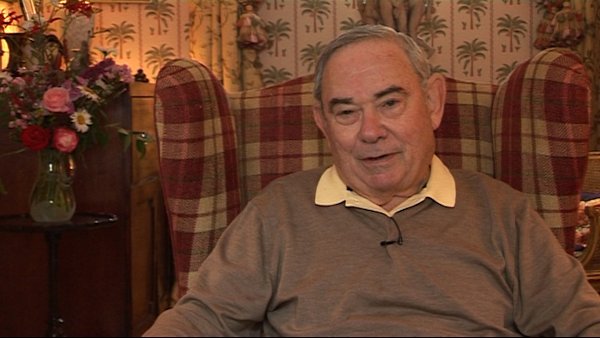NEXT STORY

Walking pneumonia
RELATED STORIES

NEXT STORY

Walking pneumonia
RELATED STORIES


|
Views | Duration | |
|---|---|---|---|
| 61. Robert Chanock and the Eaton agent | 96 | 01:26 | |
| 62. Walking pneumonia | 72 | 01:31 | |
| 63. How to grow the Eaton agent | 51 | 02:16 | |
| 64. A mystery organism | 64 | 01:45 | |
| 65. Experimenting with different tissue culture media | 61 | 04:51 | |
| 66. Working with an unknown mycoplasma | 58 | 03:58 | |
| 67. Choosing to focus on cell cultures | 53 | 03:48 | |
| 68. Identifying the etiological agent of human primary atypical... | 51 | 01:43 | |
| 69. An unexpected co-author | 58 | 05:14 | |
| 70. Scientists seek recognition and reward | 72 | 01:49 |


The virologists began to hear about this exquisite sensitivity of my normal cells to human viruses and one of the ones who heard about it was a man by the name of Robert Chanock, who was employed as a major scientist at the National Institute of Allergy and Infectious Diseases at the NIH in Bethesda, Maryland. He knew Hilary Koprowski. I didn't know Bob at that time at all and he asked Hilary whether Hilary could arrange for he, Bob, to come up to Philadelphia from Washington and get a culture of one of my diploid cell strains, normal cell strains, for his use. And also, by this time, many other friends were asking for cultures for the same purpose. Of course I agreed. And Bob showed up at my lab and I had prepared a culture for him and while the preparation was taking place, he... I asked him what kind of... what work he does. 'Well', he said, 'I'm working with an unknown organism. We don't know its biology, but it's called the Eaton agent, named for a man whose full name is Monroe Eaton, working at Harvard and Boston.'
Leonard Hayflick (b. 1928), the recipient of several research prizes and awards, including the 1991 Sandoz Prize for Gerontological Research, is known for his research in cell biology, virus vaccine development, and mycoplasmology. He also has studied the ageing process for more than thirty years. Hayflick is known for discovering that human cells divide for a limited number of times in vitro (refuting the contention by Alexis Carrel that normal body cells are immortal), which is known as the Hayflick limit, as well as developing the first normal human diploid cell strains for studies on human ageing and for research use throughout the world. He also made the first oral polio vaccine produced in a continuously propogated cell strain - work which contributed to significant virus vaccine development.
Title: Robert Chanock and the Eaton agent
Listeners: Christopher Sykes
Christopher Sykes is a London-based television producer and director who has made a number of documentary films for BBC TV, Channel 4 and PBS.
Tags: National Institute of Allergy and Infectious Disease, National Institute of Health Bethesda Maryland, Robert Chanock, Monroe Eaton, Hilary Koprowski
Duration: 1 minute, 26 seconds
Date story recorded: July 2011
Date story went live: 08 August 2012